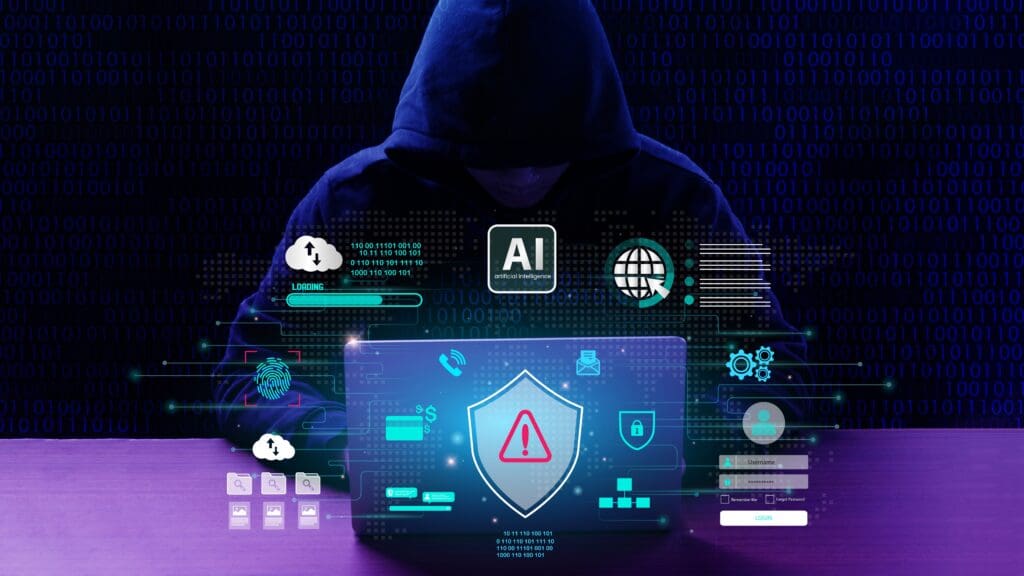In late 2024, a new ransomware group known as FunkSec emerged, leveraging artificial intelligence (AI) to enhance their cybercriminal activities. By January 2025, they had targeted over 85 organisations worldwide, employing sophisticated tactics that blend AI capabilities with traditional ransomware methods.
Understanding FunkSec’s Modus Operandi
FunkSec employs a double extortion strategy, which involves both encrypting victims’ data and exfiltrating it. This approach pressures victims to pay ransoms not only to regain access to their data but also to prevent the public release or sale of sensitive information. Notably, FunkSec has demanded relatively low ransoms, sometimes as little as $10,000, and has been known to sell stolen data to third parties at reduced prices.
The group operates a Tor-based data leak site (DLS), established in December 2024, to centralise their ransomware operations. This site features breach announcements, a custom tool for conducting distributed denial-of-service (DDoS) attacks, and bespoke ransomware as part of a ransomware-as-a-service (RaaS) model.
AI Integration in Ransomware Attacks
FunkSec’s utilisation of AI enhances their attack capabilities in several ways:
- Automated Reconnaissance: AI algorithms enable the rapid scanning and identification of network vulnerabilities, allowing for swift and targeted attacks.
- Adaptive Malware Development: The development of the group’s tools, including the encryptor, is likely AI-assisted, contributing to rapid iteration despite the author’s apparent lack of technical expertise.
- Evasion Techniques: AI assists in creating malware that can adapt to and evade traditional security measures, increasing the likelihood of a successful breach.
Victimology and Global Impact
FunkSec’s activities have affected organisations across various sectors, including media, IT, retail, education, automotive, professional services, and NGOs. Their victims are geographically dispersed, with a significant presence in the U.S., India, Italy, Brazil, Israel, Spain, and Mongolia.
In one notable incident, FunkSec claimed responsibility for a data breach involving 10 million Israeli citizen records, which were listed for sale on the dark web.
Hacktivism and Cybercrime Convergence
FunkSec represents a blurring of lines between hacktivism and cybercrime. Some members have engaged in politically motivated activities, aligning themselves with movements such as “Free Palestine” and attempting to associate with now-defunct hacktivist entities like Ghost Algeria and Cyb3r Fl00d. This convergence of political agendas and financial incentives adds complexity to their operations and motivations.
Technical Sophistication and Toolset
The latest version of FunkSec’s ransomware, named FunkSec V1.5, is written in Rust, a programming language known for its performance and security features. The ransomware is designed to:
- Elevate Privileges: Gain higher system access to execute malicious activities.
- Disable Security Controls: Neutralise antivirus and other security measures to avoid detection.
- Delete Shadow Copies: Remove backup copies of files to hinder recovery efforts.
- Terminate Processes: Shut down specific processes and services that could interfere with the encryption process.
These capabilities indicate a significant level of technical sophistication, likely augmented by AI assistance in their development.
The emergence of FunkSec underscores the evolving landscape of cyber threats, where AI is increasingly employed to enhance the effectiveness of ransomware attacks. Organisations must stay vigilant and adopt advanced security measures to protect against these sophisticated adversaries. By understanding the tactics and tools utilised by groups like FunkSec, businesses can better prepare and defend against the next generation of cyber threats.
Mitigation Strategies for Organisations
To defend against AI-driven ransomware threats like FunkSec, organisations should consider implementing the following measures:
- Advanced Threat Detection: Utilise AI-powered security solutions capable of identifying and responding to sophisticated attack patterns in real-time.
- Regular Security Audits: Conduct comprehensive assessments to identify and address potential vulnerabilities within the network infrastructure.
- Employee Training: Educate staff on recognising phishing attempts and other common attack vectors to reduce the risk of initial compromise.
- Data Backup and Recovery Plans: Maintain regular, secure backups of critical data and develop robust recovery procedures to minimise downtime in the event of an attack.
- Incident Response Preparedness: Establish and regularly update an incident response plan to ensure a swift and effective reaction to any security breaches.



















“We were very impressed with the service, I will say, the vulnerability found was one our previous organisation had not picked up, which does make you wonder if anything else was missed.”
Aim Ltd Chief Technology Officer (CTO)